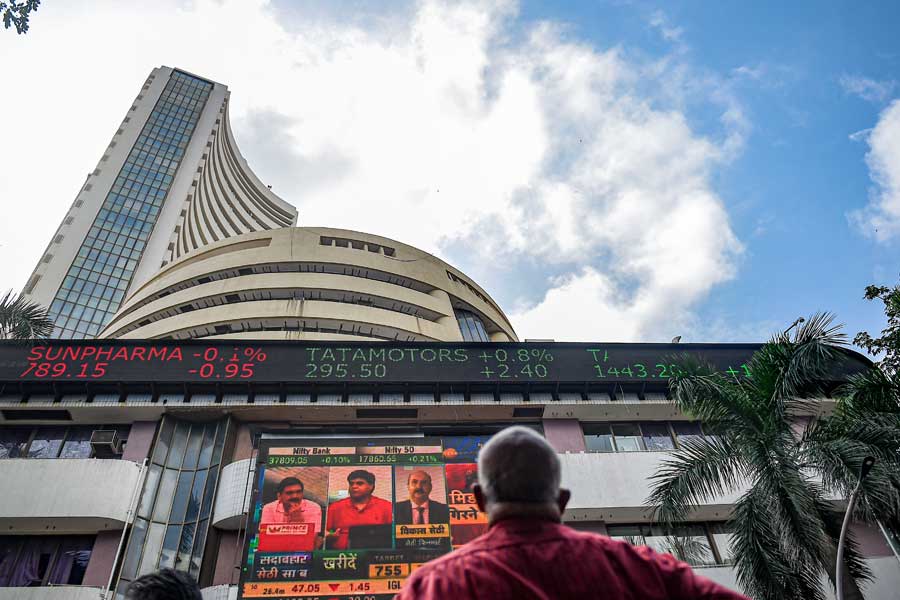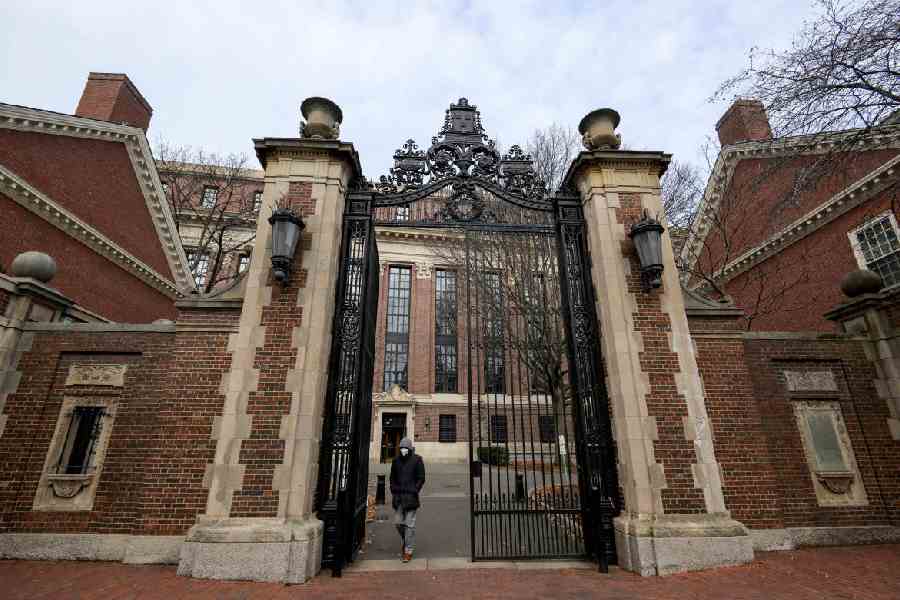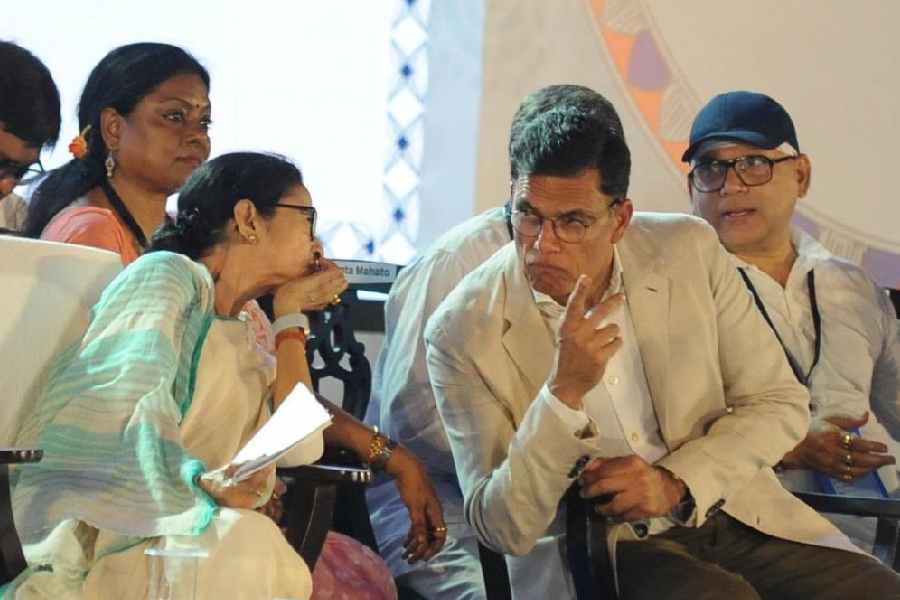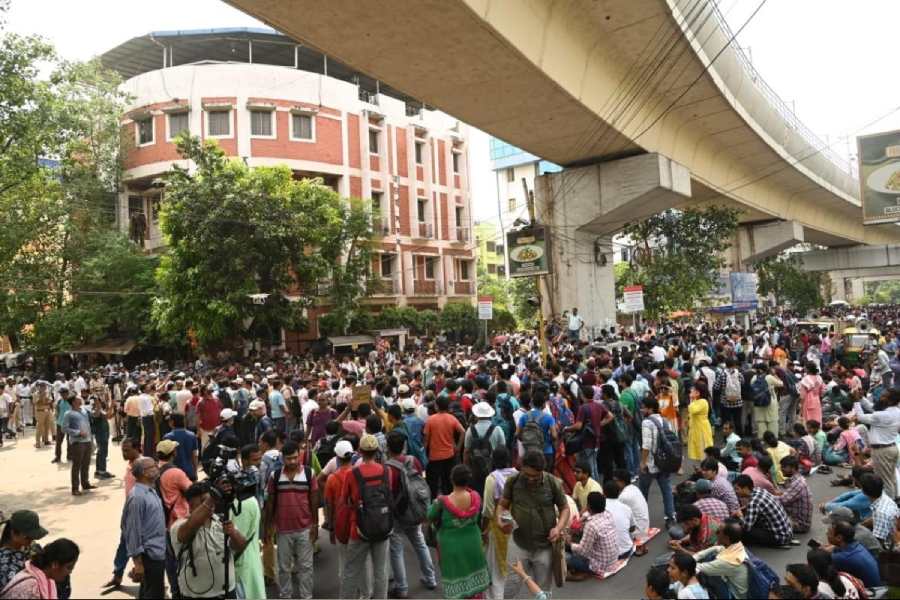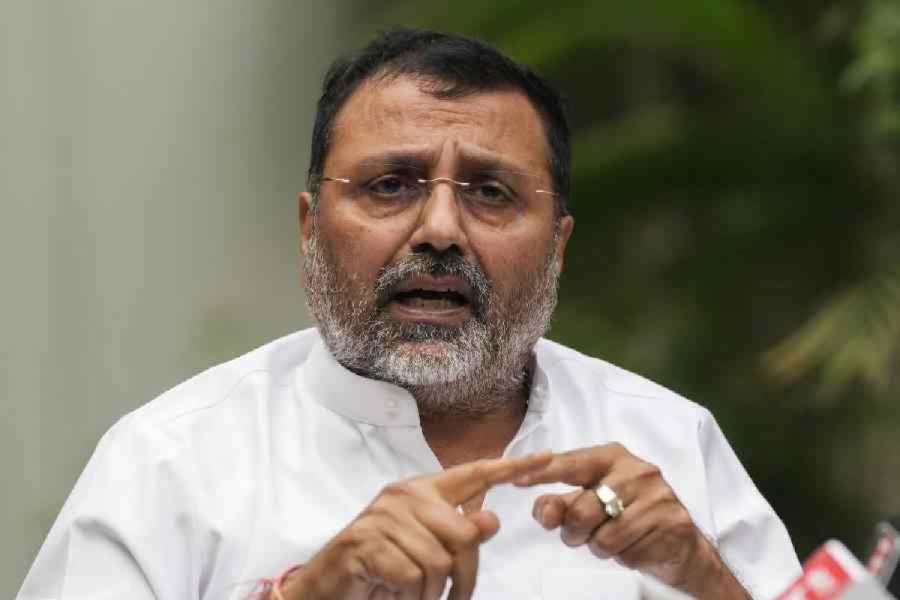 |
Rabindrasangeet may be taught in every music school in the state now, but there was a time when only nautch girls would agree to sing them. So much so that Tagore had to appeal to women from respectable families to render his songs on record.
An exhibition, on at Rabindra Tirtha, New Town, till August 23, documents the early female singers of Tagore songs. While most of the recordings have got lost in time, the photographs of the singers and their brief biography are on display from 2pm to 7pm everyday, except Monday.
 |
 |
 |
 |
 |
| (From top) Miss Niharbala, Sahana Devi, Kanak Das, Sati Devi, Kanan Devi |
Named Nari Kanthe Rabi Babur Gaan, the exhibition was inaugurated by municipal affairs minister Firhad Hakim, in the presence of chairman cum managing director of Housing and Infrastructure Development Corporation Debashis Sen, last Friday, which was both Tagore’s death anniversary and the second anniversary of Rabindra Tirtha.
The early years
The exhibition covers the years between 1908 and 1941. “We stopped at 1941 as it was the year when the bard passed away. And we chose 1908 as that is when an Indian company — Pathe H Bose — first released a record of Tagore songs. There were a few recordings before 1908 by Gramophone Company (later known as HMV) but we wanted to begin with a swadeshi touch,” says Arindam Sinha Sardar, the documentary filmmaker who has compiled the information and put up the exhibition.
The first singer featured is Rani Sundari, a theatre artiste. “Music was an essential part of theatre in those days but only baijis would perform theatre. So when companies wanted to record music, the only female singers they could approach were these theatre artistes,” explains Sinha Sardar.
Rani Sundari’s 1908 disc had two songs — Jodi baron koro tobe gahibo na, labelled with a record number 46016 on the disc and Biday korechho jare ankhi jole, with record number record 46016.
In all likelihood, these recordings were made without Tagore’s knowledge. “In those days a record had only two songs and the cover mentioned the name of the singer, songs and the raga it was based on,” explains Sinha Sardar. “Since the lyricist or composer would not be credited on the cover, the early singers adapted the songs as they pleased. Rani Sundari, for instance, used the word ‘ankhi’ instead of the original ‘nayan’ in Bidaye korechho jare ankhi jole.” There is no record of how much the disc was priced.
After two more recordings by nautch girls, Tagore himself managed to convince Deshbandhu Chittaranjan Das’s sister Amala Das to sing. This 1914 recording was the first by a woman from a respectable background. Das sang Boro bishshoy lagey heri tomarey, for Gramophone Company. But by and large it was still nautch girls who sang Tagore songs. In fact Amala Das’s recording mentioned her name as simply Miss Das to avoid the social stigma.
Tagore trivia
In 1915, Tagore became the first lyricist in India to get royalty for record sales. But his name wasn’t mentioned on a record cover till 1925.
In 1926, Tagore had to write to Gramophone Company asking them to ensure their singers do not deviate from his specified lyrics and melodies and a 1935 recording by Kanak Das used the word “Rabindrasangeet” for the first time. Before that the songs were known as Rabi Babur Gaan, hence the name of the exhibition.
The exhibition marks the gradual rise in the number of women from genteel families singing Rabindrasangeet. “There is mention of a 1927 recording by Sati Devi, mother of actress and singer Ruma Guha Thakurta, a recording of Jagaraney jaye bibhabori by the highest paid Marathi actress of her times, Shanta Apte and Kanika Bandopadhyay (nee Mukhopadhyay),” shows Sinha Sardar.
Satyajit Ray’s mother Suprabha Ray had sung Jana Gana Mana in chorus for a group called Hindustan Musical Party and his wife Bijoya had sung Sukhe achhi sukhe achhi.
“There is also mention of a 1932 duet by Rama Majumdar and Tagore himself. This was a test recording of Tomar surer dhara and was never released,” says Sinha Sardar, who has sourced all the information and photographs from books and magazines.
And you know life comes a full circle when you read about the 1941 recordings of Malati Ghosal, the daughter of Hemendra Mohan Bose, who had founded the recording company Pathe H Bose and recorded some of the first Rabindrasangeets by women.
“This history of Rabindrasangeet seems like a history of Bengali society itself. It’s fascinating to see how such a profound art was once considered untouchable,” said Pradip Mondal, a guest who had come to the exhibition from the airport area. “I was also surprised to learn about singer Uma Bose, who recorded Rabindrasangeet in 1935 and was refereed to by Gandhi as the nightingale of Bengal.”
Some of the recordings of the mentioned singers such as Kanak Das, Uma Bose and Sahana Devi will be played in the exhibition hall till August 23.





